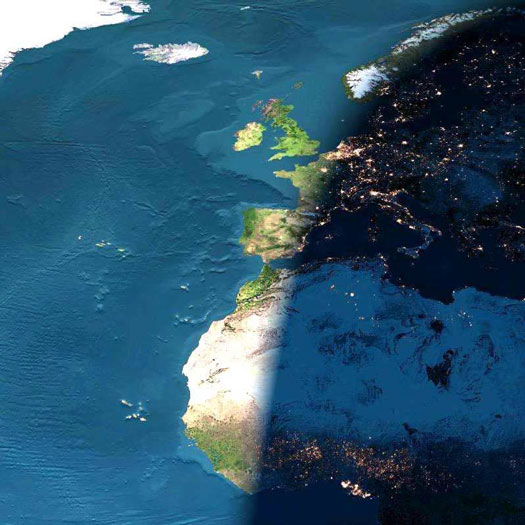
|
Credit & Copyright: The Living Earth, Inc.; Used with Permission
Explanation:
No single spacecraft or astronaut took
this picture.
It is a digital composite of archived images
taken over many orbits by several Earth-orbiting satellites.
Similar images can be digitally stitched together for any Earth location by
John Walker's
Earth and Moon Viewer
website.
Specifically, the
daytime images were taken by the
MODIS instrument on NASA's
Terra satellite,
while the nighttime images were taken by the
DMSP satellites.
This image is
different from what an
astronaut would see for reasons
including a complete lack of clouds and an unrealistic exaggeration
of lights and contrasts.
The image has become both an
internet soliton in that it continues to circulate
as an attachment to digital correspondence, and a modern
urban legend.
Another image like that is
Earth at Night.
The reason for the image's continued popularity might be simple:
it is really cool looking.
|
January February March April May June July August September October November December |
| |||||||||||||||||||||||||||||||||||||||||||||||||||||||
NASA Web Site Statements, Warnings, and Disclaimers
NASA Official: Jay Norris. Specific rights apply.
A service of: LHEA at NASA / GSFC
& Michigan Tech. U.
Based on Astronomy Picture
Of the Day
Publications with keywords: sunset - Europe
Publications with words: sunset - Europe
See also:
- APOD: 2025 December 30 Á An Artificial Comet
- APOD: 2025 December 22 Á Sunset Solstice over Stonehenge
- APOD: 2025 October 15 Á Rocket Launch Plume over Tucson
- APOD: 2025 June 15 Á Two Worlds One Sun
- APOD: 2020 August 2 Á Two Worlds One Sun
- Noctilucent Clouds, Reflections, and Silhouettes
- Shadowrise and Sunset
